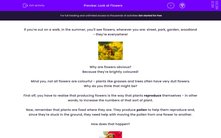If you're out on a walk, in the summer, you'll see flowers, wherever you are: street, park, garden, woodland - they're everywhere!
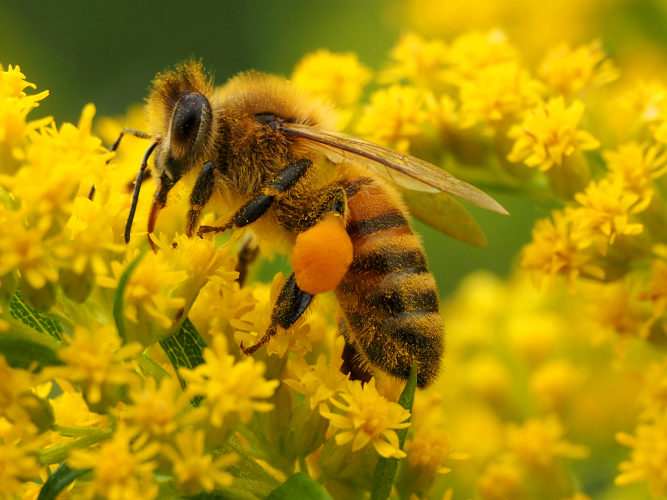
Why are flowers obvious?
Because they're brightly coloured!
Mind you, not all flowers are colourful - plants like grasses and trees often have very dull flowers.
Why do you think that might be?
First off, you have to realise that producing flowers is the way that plants reproduce themselves - in other words, to increase the numbers of that sort of plant.
Now, remember that plants are fixed where they are. They produce pollen to help them reproduce and, since they're stuck in the ground, they need help with moving the pollen from one flower to another.
How does that happen?
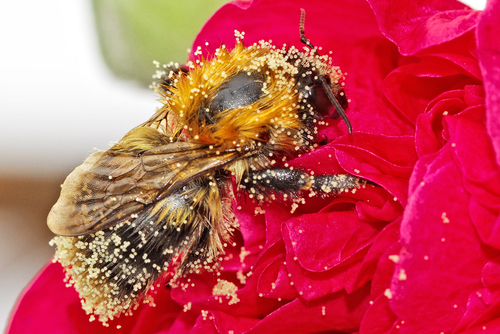
Well, some plants use bees and other insects to transport the pollen for them. That's why the flowers, where the pollen is made, have bright colours and a lovely scent (smell) to tell the bees where to find the sticky nectar that they love to drink. It's while they're drinking the nectar that they get covered in pollen - the messy things!
Remember the grasses and trees that have flowers you've never noticed?
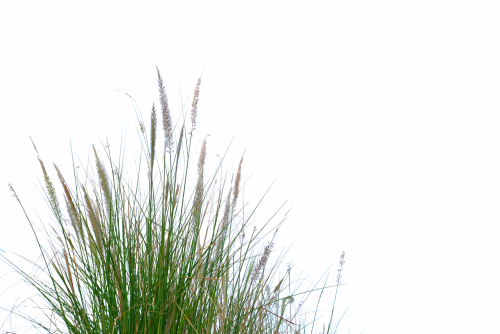
They actually use the wind to blow their pollen around - although they need it to land on another grass flower, most of it gets wasted!
Flowers are cleverly designed to make sure that the pollen is taken away and that the pollen coming in from another plant gets to the right place.
Now, all those names for the different parts of the flower are tough to remember, but start with the simple ones and build from there. You probably already know ones like petal and stalk so add stamen (the male part, where the pollen is made) and carpel (the female part, where the pollen lands) to those first two.
Here's a diagram showing the main parts of the flower - you don't have to learn them all now, but start getting used to those names:
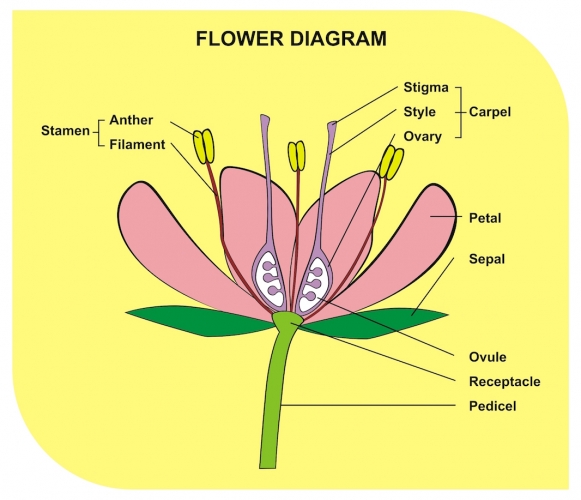
Right, well let's join Amy and her younger brother, Sam. They're out, walking the dog, and as usual Sam's interested in everything that's going on around him and he's always asking his sister about it.

